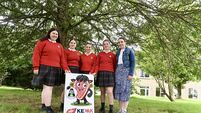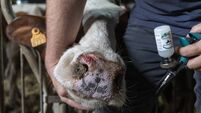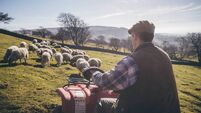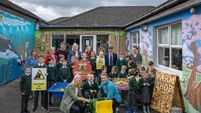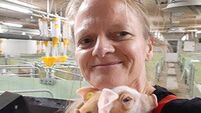Offaly students reach finals of Certified Irish Angus School Competition
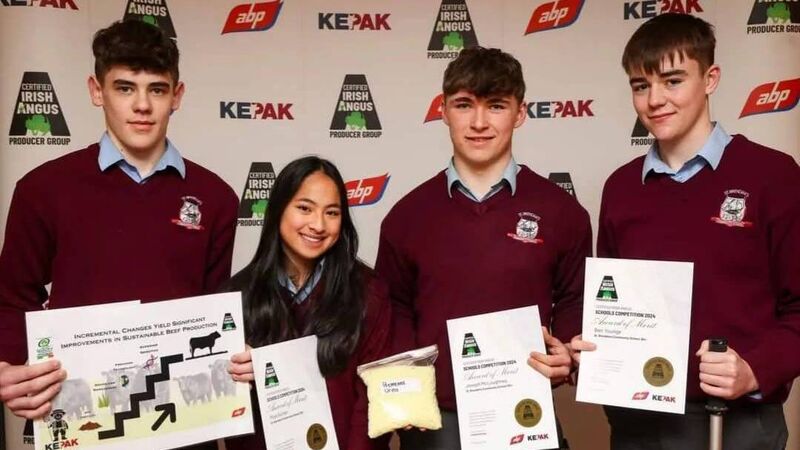
(Left to right): Jack O'Meara, Moya Guinan, Joey McLoughney and Ben Younge at Croke Park in March 2024.
A mixed team of four became the finalists for the Certified Irish Angus School Competition from St Brendan's Community School in Birr.
Moya Guinan, Jack O'Meara, Ben Younge, and Joey McLoughney, with their project titled: ‘Incremental steps yield significant improvements in sustainable beef production’, wowed the judges and shot them into the final.
The team has strong roots in a farming background, with the exception of Ms Guinan, who does not hail from a family farm, but has a keen interest in the agricultural sector. With Mr O’Meara from a beef farm, Mr Younge from a dairy farm, and Mr McLoughney having an organic beef farm at home; the team was well equipped for the competition.
Chatting with the team and their teacher, Ms Grant, they told the this was the school’s last-ditch effort in the competition after several years of not making it through to the finals.
“We [St Brendan’s CS] have entered the competition many times before with no luck, so we said we’d give it one last go,” explained Ms Grant, delighted with the team's success. Also supporting the team on their journey through the competition were teachers Ms O’Hara and Mr McKeogh.
The team’s project aimed to identify steps beef farmers could take to improve their sustainability on the farm.
With plenty of background knowledge from the boy’s farms, the team understood that farmers couldn’t make big changes all at once, instead aiming to identify and educate farmers on more manageable, smaller actions that can be completed over months or years that could still make a difference and influence farming sustainability.
Mr McLoughney explained:
Following the team’s finalist status, they were awarded their five Angus cattle, four bullocks and a heifer at last year’s Ploughing Championships, where Mr O’Meara also won the Novice Two-Furrow Conventional Junior Plough Class.
There was “great excitement” from St Brendan’s with the receiving of the cattle. The school held a naming competition, and the cattle were later christened Diesel, Brendan, Daisy, Casper and Milky Way, who were all made comfortable at Mr O’Meara’s home farm.
The whole team pitched in with looking after the cattle feeding, weighing and health monitoring, taking up a lot of the work alongside their project. The team explained at the time of the interview that the cattle ranged from 580-630kg in weight, ahead of their slaughter in the next week.
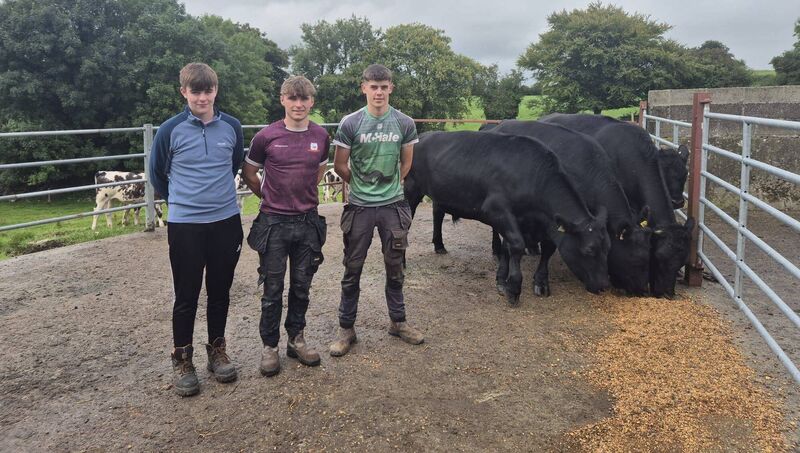
“J. Grennan and Sons were our main sponsor, they did up a sustainable food plan with us and provided the meal, which the cattle received 2.2kg of a day. They also paid for a faecal egg count on the cattle to determine what dosing we might need to do,” Mr Younge explained, with Grennan and Sons also paying for a silage analysis for the team.
“When we got the faecal egg count test back, the cattle came back with small traces of lung worm, we were able to dose specifically for the problem and avoid the overuse of antibiotics they didn’t need,” said Mr O’Meara who went on to explain using target treatments reduced costs and made their animal care more sustainable by reducing the risk of antimicrobial resistance amongst the cattle.
After a follow-up faecal egg count, the cattle were given the all-clear for any lingering lung worm and other parasites.
The small steps the students focused on for farmers to adopt were highlighting the importance of soil fertility, formulating nutritional plans, silage analysis, slurry testing, using low-emission slurry equipment and GPS for slurry and fertiliser application, as well as health monitoring animals via faecal egg counts.
The team collaborated with a number of groups for their project, such as with Teagasc advisors who explained how AgNav can be utilised to reduce emissions. They also worked with Grassland Agro to conduct soil sampling and help devise a fertiliser plan.
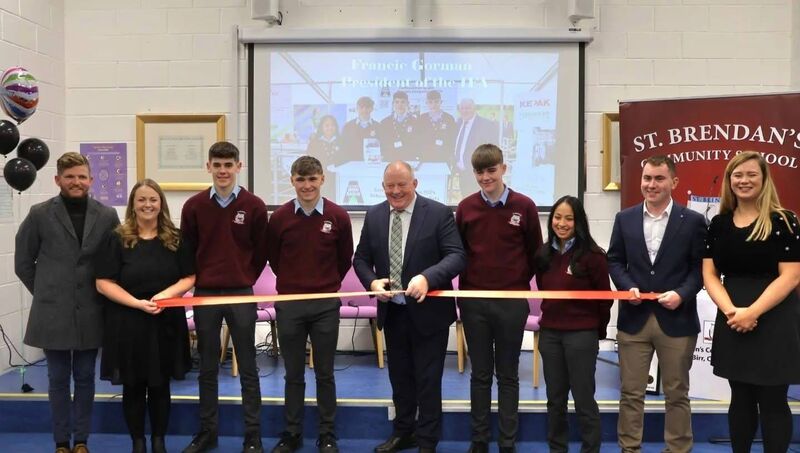
The team also helped to spread awareness of their project and the work farmers can do by talking to farmers directly at agricultural shows, such as the Tullamore show, where the team had a stand.
They also added a podcasting string to their bow by showcasing their project on the Grassland Agro podcast and the Irish Farmers Journal podcast, both of which were described as a “class experience” by Mr McLoughney, although originally a little out of the team's comfort zone.
To mark the occasion of the team reaching the final and receiving the cattle, the school held a launch event for the ‘St Brendan’s Community School Angus Farm’.
Invited were several guest speakers, including Managing Director of the NPA Anna May McHugh, IFA president Francie Gorman, Representatives from ABP and Kepak, the competition sponsors, Health and Safety Officer of FRS Tom Duffy, Head of the sustainability tent at Tullamore show, Padraig Brennan, and MJ Cleary from Midland 103, who compered for the night.
Ms Grant said:
The team got to share their projects with their school peers and special guests at the event and everyone got a meal of Angus beef burgers on the night, sponsored by Kepak.
Speaking to the team, it was hard to narrow down, but the Brussels trip to present their project to MEPs in the European Parliament, as well as their fellow finalists, was the highlight of their journey so far in the competition.
The team highly recommended the competition to any TYs interested in getting involved, explaining it was a great opportunity and had helped improve the team’s presenting skills as well as their confidence.

